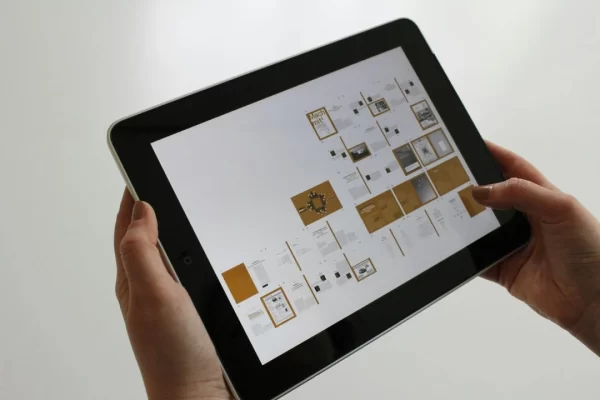When designing a website, elements like layout, color scheme, typography, and imagery play a crucial role. However, one aspect that often gets overlooked is visual hierarchy in web design. A well-structured visual hierarchy can enhance user experience, increase engagement, and boost conversions.
In this guide, we’ll dive deep into what visual hierarchy in web design is, why it matters, and how you can implement it effectively. You’ll also discover the key components and principles of visual hierarchy, along with actionable tips to enhance your website’s design.
What is Visual Hierarchy in Web Design?
Understanding Visual Hierarchy in Web Design
Visual hierarchy in web design refers to the strategic arrangement of design elements to guide users through a webpage in a deliberate and effective manner. By controlling aspects such as typography, images, color, and spacing, designers can create a structured flow that directs users’ attention to the most important content first.
A strong visual hierarchy ensures that visitors can quickly locate essential information, leading to improved usability and higher engagement. Whether it’s highlighting a call-to-action (CTA) button or drawing attention to key messaging, visual hierarchy in web design plays a pivotal role in optimizing user experience.
Why is Visual Hierarchy in Web Design Important?
Establishes a Clear Structure
A well-defined visual hierarchy in web design organizes content in a way that makes navigation intuitive. By using size, contrast, and spacing effectively, designers can create a clear structure that enhances readability and usability.
Highlights Key Information
Strategically emphasizing important elements like headlines, CTA buttons, and product features ensures that users focus on what matters most. A well-executed visual hierarchy in web design helps businesses drive conversions by making critical actions more prominent.
Enhances User Experience (UX)
Websites that follow a structured visual hierarchy in web design improve user experience by reducing cognitive load. Visitors can find information quickly and effortlessly, leading to increased trust, lower bounce rates, and better engagement.
Key Components of Visual Hierarchy in Web Design
Size and Scale in Visual Hierarchy
Larger elements naturally draw attention. Headlines, CTA buttons, and hero images should be larger compared to secondary content. Adjusting size and scale ensures that the most important elements stand out.
Color and Contrast for Emphasis
Using contrasting colors effectively can highlight key sections. Bright or bold colors can be used to draw attention to CTA buttons, while muted tones help less critical content recede into the background.
Typography and Font Selection
Font choice, weight, and spacing play a significant role in visual hierarchy in web design. Bold fonts can be used for headings, while lighter fonts can be used for body text. Proper typography improves readability and helps users navigate content effortlessly.
Spacing and Alignment for Readability
Adequate white space ensures that content is digestible and easy to read. Proper alignment creates a sense of order and balance, making the page more visually appealing.
5 Principles of Creating an Effective Visual Hierarchy in Web Design
1. Prioritization
Identify key elements on the page and design around them. Important content should be placed in prominent positions, such as above the fold or in high-contrast areas.
2. Contrast for Differentiation
Using contrasting elements (color, font weight, size) creates a visual distinction between primary and secondary content, guiding users through the page efficiently.
3. Repetition for Consistency
Repeating design elements like font styles, colors, and shapes creates consistency, reinforcing branding and improving user experience.
4. Alignment for Order
A structured grid system ensures visual alignment, making content easier to scan and absorb. Misaligned elements can create a cluttered and confusing layout.
5. White Space for Clarity
Spacing between elements prevents clutter and improves readability. White space allows users to focus on key messages without feeling overwhelmed.
How to Implement Visual Hierarchy in Web Design
Conduct User Research
Understanding user behavior and preferences is key to designing an effective visual hierarchy in web design. Use analytics and user feedback to make informed design decisions.
Regular Testing and Optimization
Use heat maps, A/B testing, and user feedback to refine your visual hierarchy in web design continuously. Adjust layouts based on performance metrics to improve engagement and conversions.
Work with a Skilled Designer
A professional web designer can help implement a strong visual hierarchy in web design, ensuring that every element contributes to an optimal user experience.
FAQ: Visual Hierarchy in Web Design
What is the main purpose of visual hierarchy in web design?
The main purpose of visual hierarchy in web design is to organize content effectively, guiding users to the most important information and actions on a webpage.
How does color impact visual hierarchy in web design?
Color influences attention and readability. High-contrast colors highlight key elements like CTA buttons, while softer hues create a more balanced and visually appealing layout.
Why is typography important in visual hierarchy?
Typography affects readability and emphasis. Larger, bolder fonts draw attention, while smaller, lighter fonts indicate secondary information.
How can I improve the visual hierarchy of my website?
To improve visual hierarchy in web design, focus on prioritizing key elements, using contrast effectively, maintaining alignment, and incorporating sufficient white space.
How does visual hierarchy impact conversions?
A well-structured visual hierarchy in web design directs users to essential actions, such as making a purchase or signing up, leading to increased conversion rates.
Collaborating With a Skilled Designer
Finally, collaborating with a skilled designer is another essential tip for implementing visual hierarchy in your web design. A professional designer can help you create a layout that effectively guides the viewer’s eye and emphasises important information.
They can also provide valuable insights and suggestions based on their experience and knowledge of design principles.
Whether you’re designing a new website from scratch or updating an existing one, these tips will help you create a website that is both visually appealing and easy to use.
Want to implement an effective visual hierarchy in your web design? Look no further than Digital Rescue! Our team of skilled web designers can help you create a layout that guides the viewer’s eye and emphasises important information. Contact us today to learn more about our digital services and start implementing visual hierarchy in your web design.



